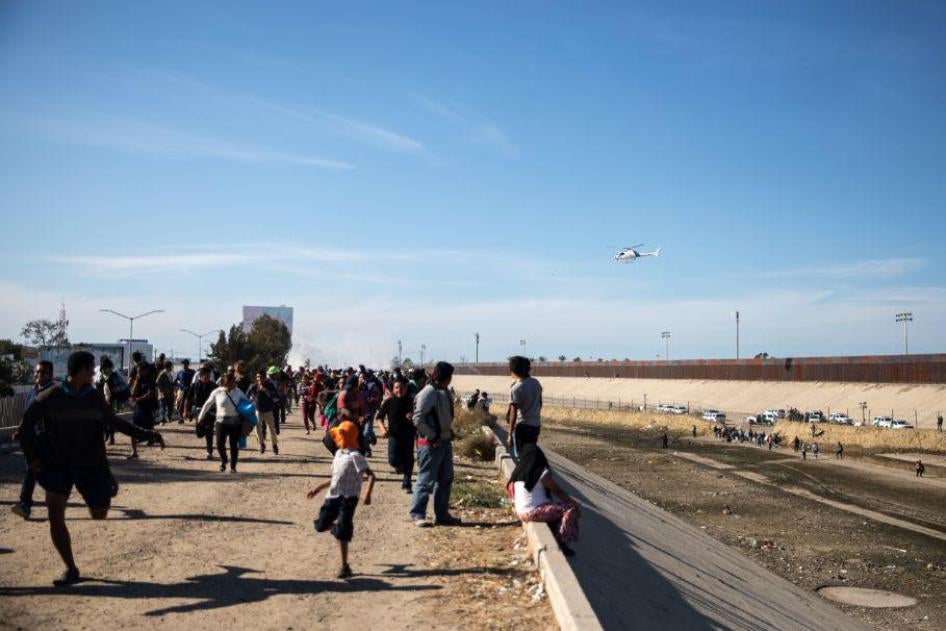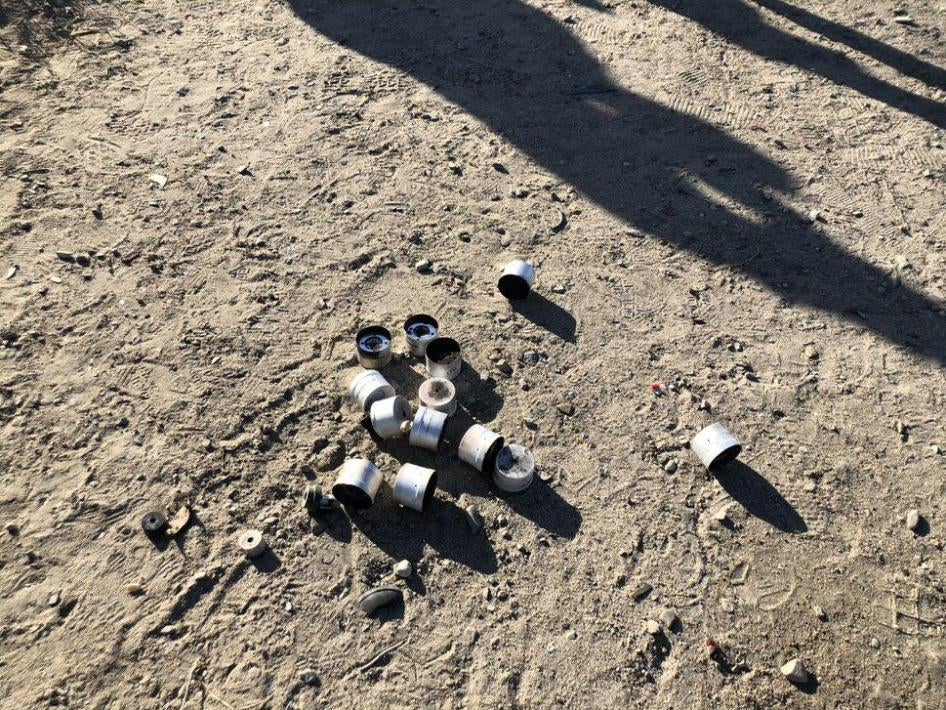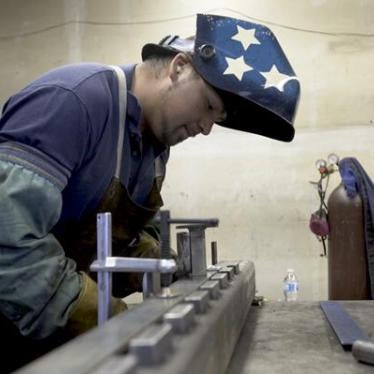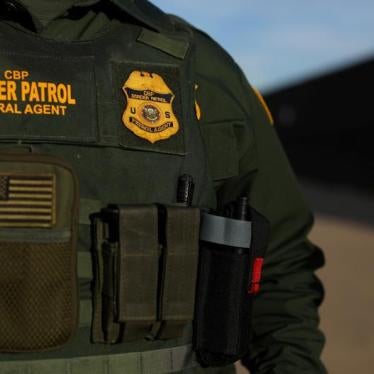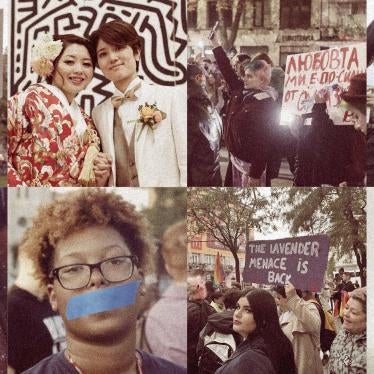The day started peacefully. Hundreds of Central American men, women, and children walked with banners and baby strollers from the Benito Juarez stadium to the El Chaparral port of entry, on the US-Mexico border. They marched to ask for asylum and thank the Mexican authorities for their support.
But by day’s end, the fortified Tijuana-San Diego border crossing was temporarily shuttered as US border agents and police lobbed tear gas projectiles at migrants, including young children and women on the Mexican side of the border, sparking widespread panic. Under US and international law, an unauthorized crossing is not grounds to block someone from claiming asylum; neither does it change limits on the appropriate use of force.
So what happened?
In the face of a mass of unarmed people, all the Mexican federal police officers I saw positioned themselves with helmets and shields, trying to direct and disperse the crowds, apparently without any unnecessary resort to force.
#US border guards shooting several rounds of tear gas into #Mexico to disperse migrants massed at the border in #Tijuana. Many women and children around... «I fainted, » one woman told me. pic.twitter.com/HZ6RsiNBLM
— Jonathan Pedneault (@j_pedneault) November 25, 2018
But some individuals pushed their way through, opening a breach in the line of police shields that was quickly widened by dozens of migrants who sought to run into US territory.
The more people began running towards the border, the more joined them. I observed as the migrants, pushing baby strollers and wheelchairs with their meager belongings on their backs, streamed across the Tijuana river to the Mexican immigration offices and through fences to neighboring train tracks.
Given the extensive fortifications at the US border, the migrants’ push to cross the border was doomed, even if they held out hopes that they somehow would be able to get through.
These migrants face extreme restrictions imposed by the US government on being able to present their claims to asylum through the port of entry (according to press accounts, 80 people were allowed through the port of entry on Friday, which was cut to 40 on Saturday and Sunday).
The Customs and Border Protection agency justified its use of force by stating that “several migrants threw projectiles at the agents.” In response, the shielded, helmeted agents fired separating Triple-Chaser tear gas grenades at masses of people that contained many women and children. They could easily see these families from the three helicopters – two from the US marine corps and one from the Customs & Border Protection – that constantly hovered a few dozen meters above everyone’s head, including mine.
Under international human rights standards, border guards – like any other police force – may only use of force when necessary, and the force used must be proportionate to the seriousness of the offense and the legitimate objective to be achieved.
One woman told me she fainted from the teargas. It’s not surprising: one could feel the effects of the grenades’ chemicals, described by the manufacturer as “including Lead Salts and Hexavalent Chromium, which are known to the State of California to cause cancer, and Lead Salts, which are known to the State of California to cause birth defects or other reproductive harm,” from several hundred meters away.
Things could have however been worse. While cross-border shootings are not common, they do occur. In May, The Guardian reported that Customs and Border Protection officers killed at least 7 migrants who were on Mexican soil since 2003.
